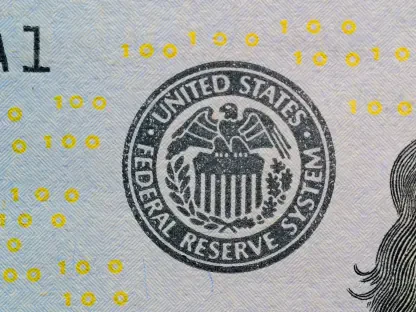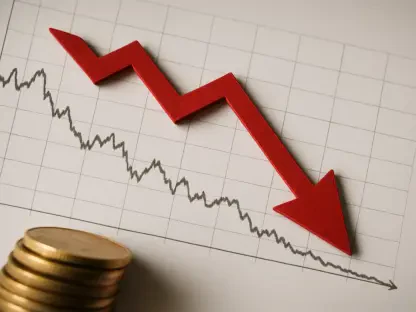The stock market’s era of uniform growth, where a rising tide lifted all boats, is over. Now, investors are carefully examining companies to identify which ones are strong and which ones are weak, based on their performance and reliable future plans. Recent trading activity reveals a stark divergence, punishing companies that show any hint of future weakness while rewarding those with resilient fundamentals.
It’s not just typical market volatility, but rather a fundamental shift in investor sentiment. As economic uncertainty persists, the focus has pivoted from speculative growth stories to proven performance and profitability. A strong earnings report is no longer enough. The critical question now is whether a company can sustain its momentum. This article examines the key trends driving this market divide, focusing on which companies are thriving and which are faltering in an unforgiving economic climate.
Industrials Signal Underlying Economic Resilience
In a mixed market, the performance of industrial giants can serve as an influential economic bellwether. Caterpillar, a leader in construction and agriculture equipment, saw its stock jump 12% after delivering third-quarter results that far exceeded expectations. The company posted an adjusted profit of $4.95 per share on $17.64 billion in revenue, comfortably beating analyst forecasts. This surge, which puts the stock on pace for its best day since 2009, suggests robust demand in the core sectors of the economy.
And it isn’t an isolated event. Flowserve, a supplier of industrial machinery, soared 30% on the back of its own robust earnings and upgraded guidance. It reported adjusted earnings of 90 cents per share, well above estimates. More importantly, Flowserve raised its full-year earnings outlook, signaling confidence in its operational pipeline and market position. These results indicate that despite broader economic headwinds, foundational industries remain strong, rewarding companies that execute flawlessly.
Guidance Is the New Gospel
While strong current performance is good, a weak outlook is fatal. No company felt this more acutely than Fiserv. The financial services technology firm plummeted 40% after reporting a significant third-quarter earnings miss and, critically, slashing its full-year guidance. The market’s reaction was swift and brutal, positioning the stock for its most significant single-day decline on record. The miss wasn’t just a slight deviation; earning $2.04 per share against an expected $2.64 revealed a significant operational gap.
This trend extends beyond the financial sector. Stride, a for-profit education company, plunged 50% in what was on track to be its worst trading day ever. The catalyst was not its past performance but its bleak future guidance. Similarly, Enphase Energy fell over 13% after its full-year revenue forecast fell well short of analyst expectations. These dramatic sell-offs underscore a new market reality: investor confidence is now overwhelmingly tied to a company’s projected performance. Any sign of future trouble triggers an immediate and decisive retreat.
Tech’s Divergent Paths: From Hype to Reality
The technology sector, once a monolith of growth, is now experiencing its own internal sorting. Nvidia continues its remarkable ascent, with shares climbing another 2% to push its market capitalization past the historic $5 trillion mark. The sustained rally reflects deep investor confidence in the chipmaker’s central role in the ongoing AI revolution. More than 70% of data centers globally now use Nvidia hardware for AI workloads, making its technology foundational to the industry. [Human Editor: Insert source to support this claim].
However, the glow of AI is not warming the entire sector. Extreme Networks, a cloud networking provider, plunged 16% despite posting earnings that were technically ahead of analyst expectations. The lukewarm reception suggests investors are looking for more than marginal beats in a competitive field. Seagate Technology, a data storage company, offered a counterpoint, rising 17% after exceeding fiscal first-quarter expectations. This divergence shows that investors are no longer buying into broad sector hype. Instead, they are making targeted bets on companies with clear market leadership and defensible competitive advantages.
When a Strong Report Isn’t Strong Enough
In this discerning market, even beating expectations on both revenue and earnings is not always enough to earn a positive reception. CoStar Group, a real estate analytics company, dropped more than 17% despite posting results that surpassed analyst forecasts. The company earned $834 million in revenue and adjusted earnings of 23 cents per share, both of which exceeded expectations. However, the market responded negatively and drove down the stock price. These numbers suggest that investors are digging deeper, perhaps uncovering concerns about user growth, competitive pressures, or the outlook for the commercial real estate market that the headline numbers obscure.
Similarly, Boeing’s stock fell 3% after its latest quarterly report. While its revenue of $23.27 billion was higher than expected, the aerospace giant reported a much steeper loss per share than analysts had feared. The market chose to focus on the widening losses rather than the revenue beat, demonstrating a clear prioritization of profitability over sheer sales volume. Recent reports indicate that persistent supply chain disruptions have increased production costs for aircraft manufacturers by an average of 15% over the past year. [Human Editor: Insert source to support this claim].
Investor and Corporate Imperatives
The new rules of the market are clear and strict: clear prospects and proven operational strength decide who succeeds and who fails. Growth without believable sustainability is no longer acceptable. For companies, that means turning rhetoric into a measurable discipline. More precise forecasts, tighter cost control, and evidence that growth can translate into durable profits are essential components of that discipline. For investors, it means shifting from broad storytelling to forensic due diligence: interrogating guidance, stress-testing margins, and favoring businesses with repeatable cash generation.
According to a recent global survey of institutional investors, approximately 85% report that greenwashing and similar misleading statements regarding companies’ sustainability performance have become a more significant issue compared to five years ago. That change in emphasis reshapes both corporate incentives and market outcomes: forecast credibility becomes a form of currency, and ambiguity is penalized.
What to watch next:
Guidance credibility: Upgrades or clear, conservative outlooks are rewarded, while sudden cuts trigger selling that can erase prior gains.
Operating leverage: Investors reward visible improvements in margins, cash flow, and capital efficiency more than topline growth alone.
Sector leadership, not sector membership: Tech, industrials, and others will continue to show internal winners and losers — pick companies with durable advantages, not broad-belief narratives.
Quality of disclosure: Transparent, specific guidance and forward-looking KPIs reduce uncertainty and lower the risk premium investors demand.
The market has shifted from applauding potential to expecting evidence. The businesses that succeed will be those that support their narratives with quantifiable and consistent results — and the investors who succeed will be those who identify that evidence early and take decisive action.
Final Thoughts
In an era marked by higher capital costs and persistent uncertainty, investors are no longer willing to support ambition without accountability. The result is a market that prizes precision over promise and execution over excitement. Companies that deliver credible guidance, maintain consistent profitability, and communicate transparently will continue to attract capital. Those who cannot will find that narrative alone is no longer enough.
This divide between those who prove it and those who promise it will shape not just quarterly outcomes but the market’s character for years to come. Fundamentals have returned to relevance and have become the only story that truly matters.









